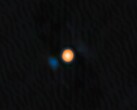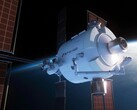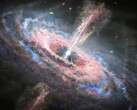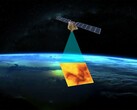Artificial intelligence continues to advance exponentially and is already present in many areas of everyday life. But that's not all, because it is also present in space. In fact, a satellite recently completed a mission, led by NASA, without human assistance, which is a major technological achievement.
Called Dynamic Targeting, this technology was used by NASA's Jet Propulsion Laboratory (JPL) in early July. More specifically, it was incorporated into a satellite no larger than a briefcase manufactured by Open Cosmos and containing a machine learning processor developed by Ubotica.
During this rather astonishing mission, the satellite tilted to scan 500 km ahead of its initial orbit and capture an image. Once this was done, Ubotica's artificial intelligence took over to analyze the image and check the cloud cover.
Depending on the result, two options were available. If the sky was clear, the satellite would tilt backward to take a new detailed image of the Earth's surface. In the other situation, including a sky covered by clouds, it would not have taken any pictures, in order to save time, bandwidth, and storage.
However, even though we are still a long way from having spacecraft capable of navigating alone at astonishing speeds in space, it is important to understand that this is a major advance for scientists, as Ben Smith of JPL explains: "If you can be smart about what you're taking pictures of, then you only image the ground and skip the clouds. This technology will help scientists get a much higher proportion of usable data."
It must be said that, at present, scientists have to sort through the many images they receive from satellites. This is because they are programmed to take numerous shots, even if they are unusable. As a result, this major advance with the help of artificial intelligence could help scientists observe natural disasters, such as fires or eruptions, much more quickly than with current satellite technologies.























